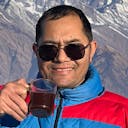- History of Langtang: Evereything you need to Know
- Why should you choose Langtang as a prime trekking destination in Nepal?
- Langtang Valley Trek: Valley of Glaciers
- Langtang National Park: The First Himalayan National Park of Nepal
- Lantang Ri: A High Himalayan Mountain
- Gosaikunda: The Sacred Lake of Lord Shiva
- The rich biodiversity of the Langtang region
- Discover rich culture during the Langtang Trekking
- Alluring Mountain Views
- Spotting Yaks and Enjoying Fresh Yak Cheese
- Best Trekking destination in Langtang Region
- Why choose these five treks in the Langtang Area?
- Festivals Celebrated around Lantang
- Ethnic Groups of the Langtang
- Best Spots for Photography on the Langtang Region
- Preparation Checklist for Langtang Trekking
- All you need to Know about Langtang: A complete guide
- Conclusion
If you are in Kathmandu and want to get a Himalayan experience near the city, head to the valley of Langtang. Yes! Langtang is the only trekking region that lies close to Kathmandu, the capital of Nepal. The trailhead to the best treks in Langtang can be reached within 7 to 8 hours from Kathmandu.
So, if you are short on time and looking for a hike that takes you up the mountains without having to worry about booking a mountain flight or a long overland journey, the Langtang Region trekking is a perfect choice.
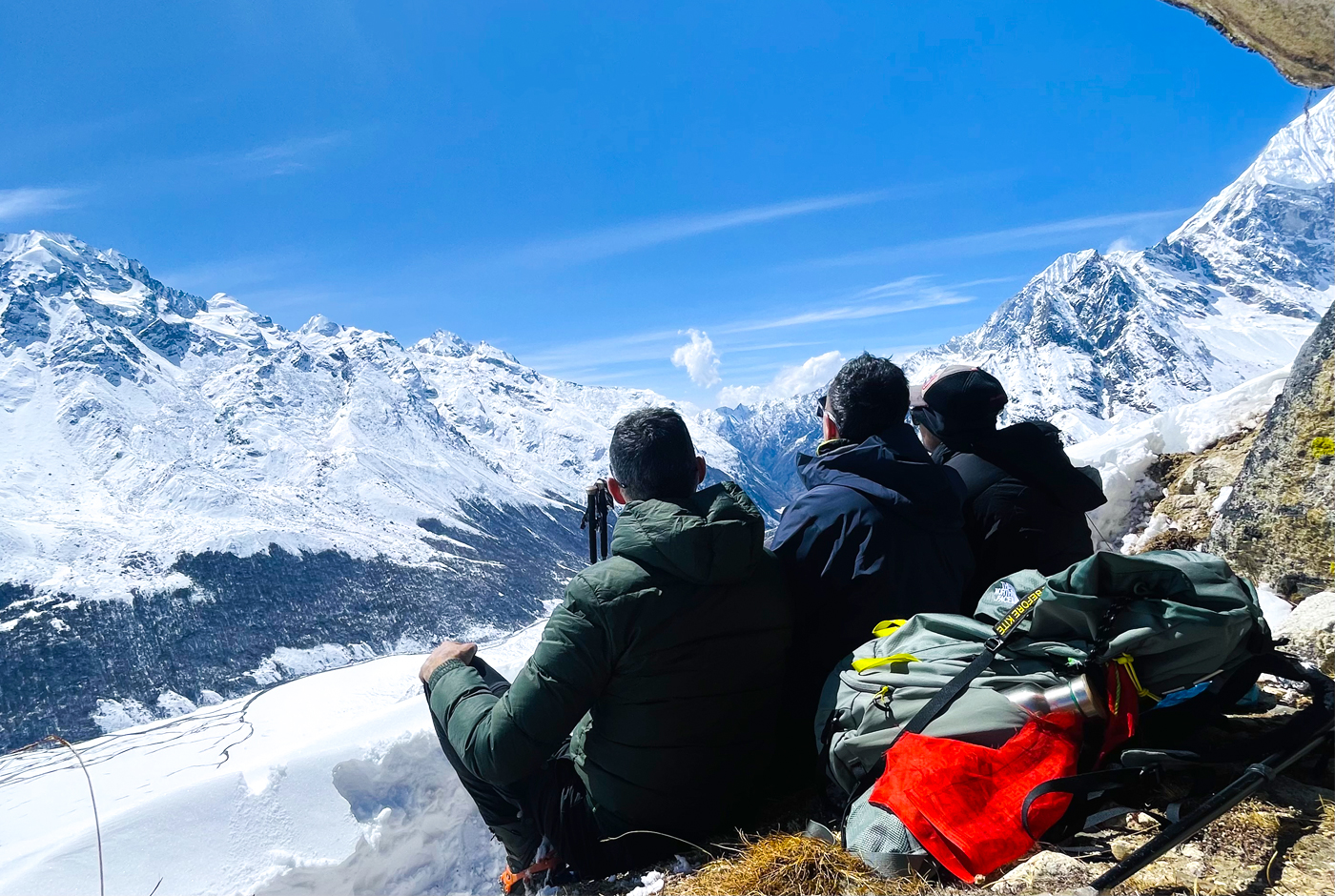
History of Langtang: Evereything you need to Know
Let’s talk about a special place in our beautiful Nepal called Langtang. A long time ago, not many people knew about this secret place with big mountains and beautiful views.
In the 1950s, Nepal said "hello" to visitors from far away. The very first foreigners to explore Langtang were adventurers from Europe, curious about the towering peaks and unique culture of the Himalayas. They came to see our mountains and were amazed by Langtang. They put on their backpacks and started walking through the mountains, exploring and having fun.
As more people heard about Langtang, they too wanted to come and see it. They walked on trails, climbed up hills, and looked at all the beautiful things around them. Among the hills and valleys, they met the local people, the Tamang and Sherpa, who are really kind and friendly. These local folks had settled in Langtang many centuries ago, coming from Tibet. They built their homes from stones and wood they found in the mountains and started new lives in this beautiful but tough terrain.
These communities shared their homes, their food, and showed the visitors how they celebrate and live with joyful festivals and colorful traditions. They danced, sang, and shared stories of their ancestors.
But one day, a big earthquake shook our land in 2015. It broke many homes and paths in Langtang. However, the strong people of Langtang, including other ethnic groups like the Gurung and Hyolmo, didn’t give up. They worked together, with help from friends near and far, to rebuild everything that was lost.
Soon, Langtang started to look like the beautiful place it was before and even better now. The people rebuilt their houses, fixed the trails, and welcomed visitors again with warm smiles. They showed everyone that even after something very sad, we can stand up and make things better again.
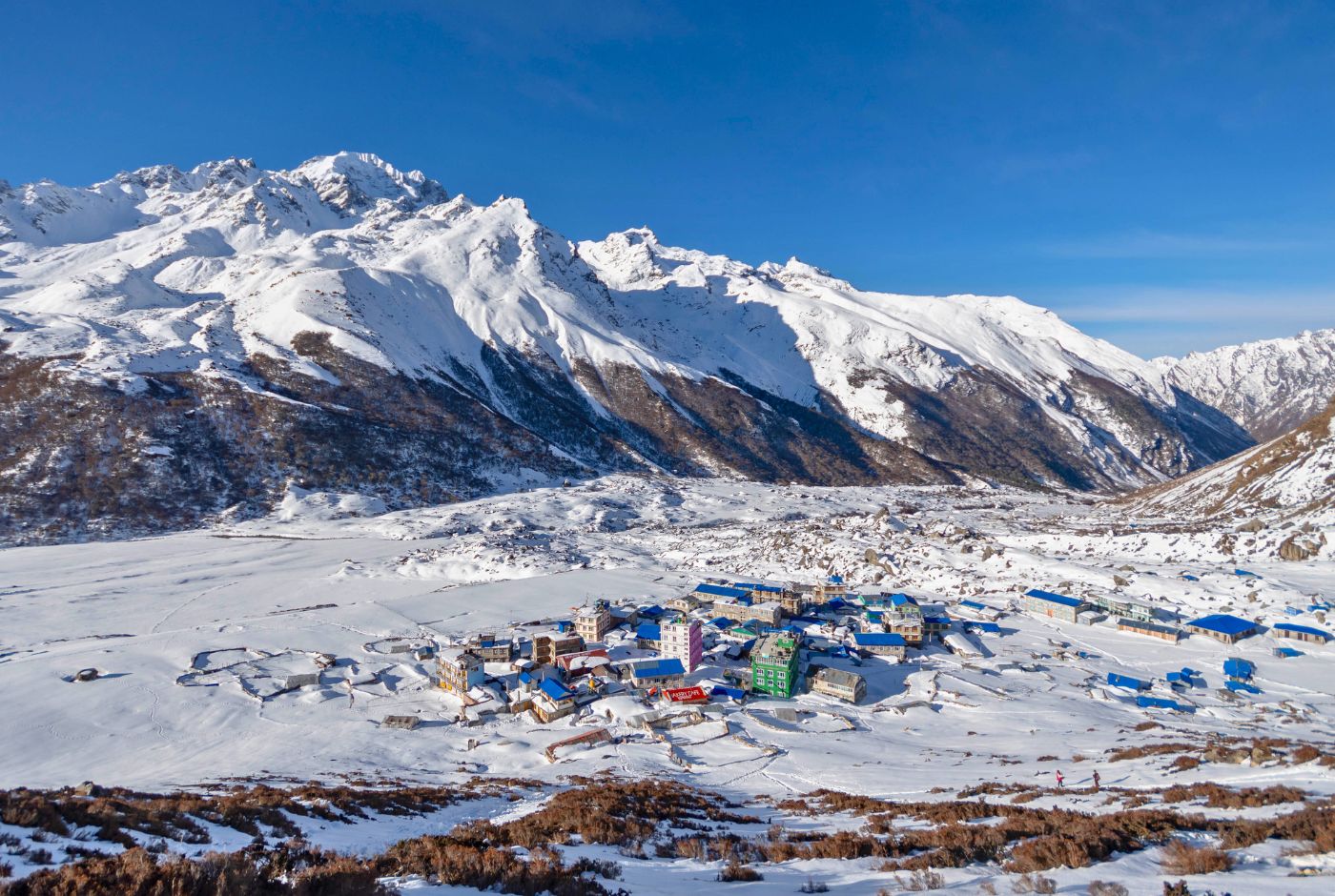
Now, Langtang is still a wonderful place to visit. People from all over the world come to walk through its beautiful mountains, see the lovely views, and learn from the kind people who live there. It’s a place of adventure, where you can see how strong and kind people can be.
And this is the history of Langtang, a special part of our Nepal that shows us how to be brave and keep smiling, no matter what. Maybe one day, you can visit Langtang and see its beauty for yourselves!
Why should you choose Langtang as a prime trekking destination in Nepal?
Here are the top 8 reasons why you should choose Langtang Region:
Langtang Valley Trek: Valley of Glaciers
Langtang Valley, a gem in the Himalayas, is famously known as the "Valley of Glaciers." This name captures the essence of the valley, where towering peaks and ancient glaciers dominate the landscape.
As you trek through Langtang, you are surrounded by the stunning beauty of these glaciers, which are key features of the valley. These ice formations, created over centuries, give Langtang its unique and powerful identity, making it one of Nepal's most remarkable trekking destinations.
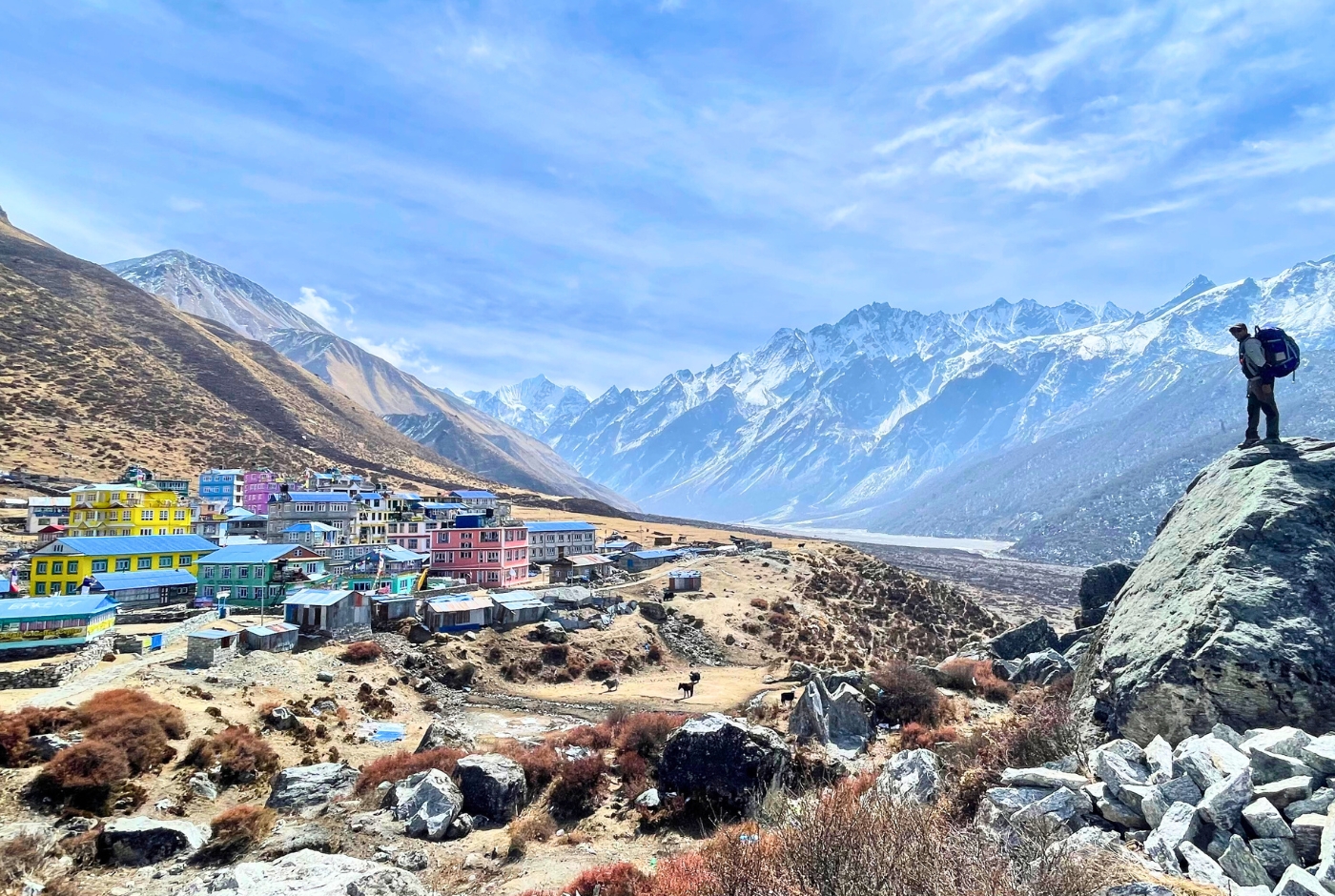
From which places can you see the glaciers of Langtang?
- Kyanjin Gompa (3,830 meters)
- Tserko Ri (5050 meters)
- Langshisha Kharka (4,285 meters)
Langtang National Park: The First Himalayan National Park of Nepal
Langtang National Park, established in 1976, is Nepal's first Himalayan national park, covering 1,710 square kilometers across the districts of Nuwakot, Rasuwa, and Sindhulpalchok. This park is a sanctuary for diverse flora and fauna, offering trekkers a chance to experience the vibrant natural beauty of Langtang.
As you trek through Langtang National Park, you'll pass through forests that range from subtropical to alpine. Dense bamboo groves, vibrant rhododendron forests, and towering trees like oak, maple, and cedar create a lush and varied landscape.
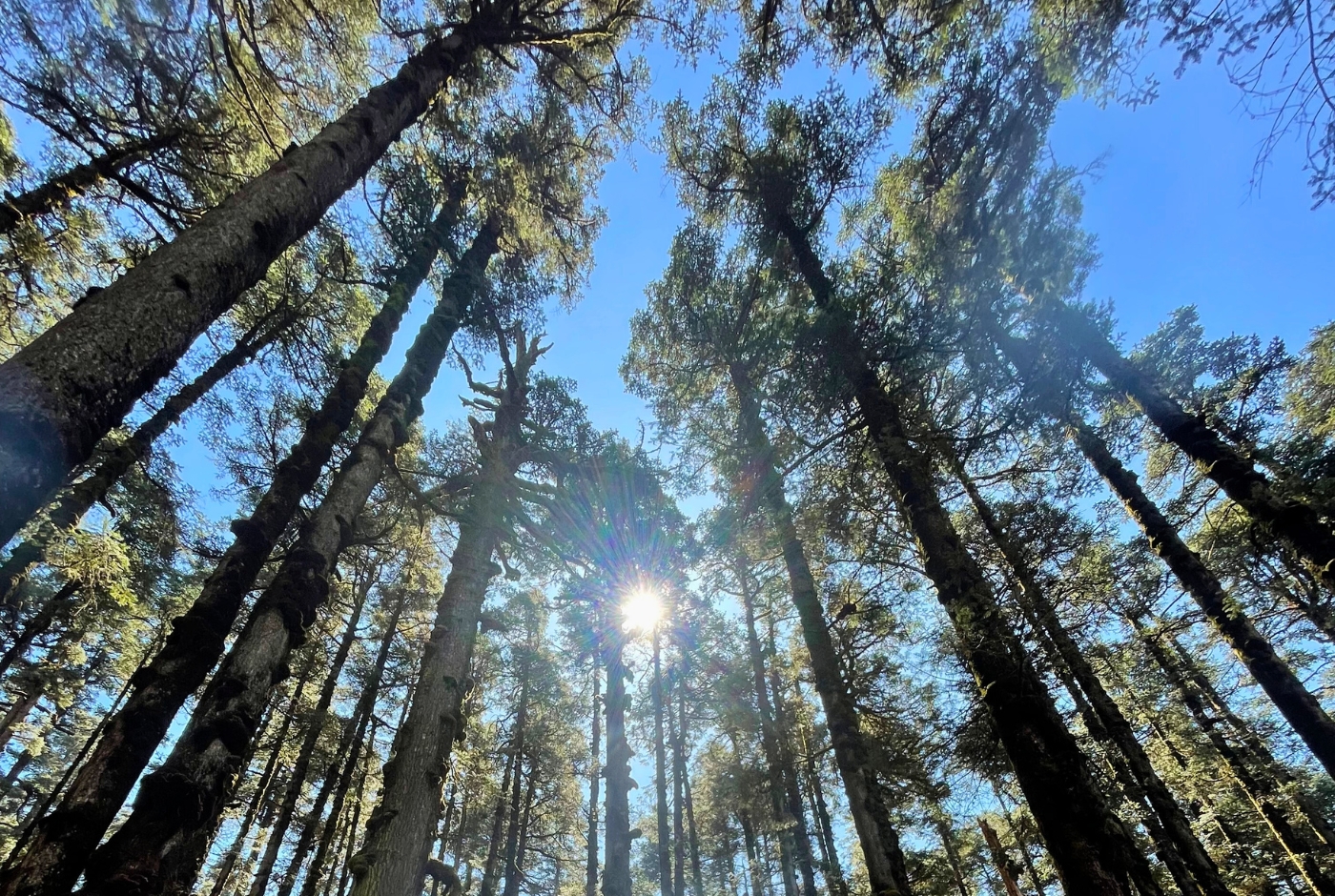
The park is also home to endangered species like the Red panda, Himalayan Black bear, and the elusive Snow leopard, along with Rhesus monkeys and Himalayan Thars. Birdwatchers will find the park a paradise, with many bird species, including Nepal’s national bird, Danfe, thriving in its diverse habitats.
Lantang Ri: A High Himalayan Mountain
Langtang Ri is an important mountain peak in Langtang Himal of the Nepal Himalaya. At an elevation of 7,205 meters (23,638 feet), it ranks as the 106th highest mountain in the world.
Key facts of Langtang Ri
- The mountain is located on the border between the Bagmati Zone of Nepal and Tibet, China.
- Langtang Ri is part of a group of high peaks, including Shishapangma (8,013 meters) and Porong Ri (7,292 meters).
- The first successful expedition of Langtang Ri was made on 10 October 1981 by a Japanese expedition.
- The most common route for climbing Langtang Ri is via the southwest ridge, which requires technical climbing skills due to the steep ice and snow slopes.
- Even if you are not climbing, the Langtang Valley Trek provides excellent vantage points to view Langtang Ri.
Gosaikunda: The Sacred Lake of Lord Shiva
Gosaikunda, also called Silu (Called by Newars), is a special lake high up in the Langtang National Park, at 4,380 meters above sea level. According to Hindu stories, the lake was created by Lord Shiva. It is said that Shiva collided with the mountain with his trident to create the lake so he could drink water after swallowing poison.
The lake is very important to many people who come to pray, especially during the Janai-Purnima festival. In winter, the lake turns into ice, making the area look like a beautiful frozen scene. When the ice melts, the water flows down and becomes the Trishuli River.
Gosaikunda is famous for its breathtaking views, and the journey to the lake lets visitors see the beautiful mountains and experience the local culture of the people who live there.
The rich biodiversity of the Langtang region
The Langtang Region takes you through the deep gorges of Bhote Koshi and Langtang Khola( river), which are thickly covered with the forest of rhododendron, oak, cedar, maple, and alder. In the lower Langtang Valley and Gosaikunda, you will see the red panda, wild boar, Himalayan black bear, grey langur, and leopard. The rare Himalayan Tragopan and pheasants can be sighted in this region. The upper Langtang area is a known breeding ground of the bills besides Tibetan snow cock and partridge.
Discover rich culture during the Langtang Trekking
The Langtang Trek is a journey that allows you to experience the deep cultural traditions of the Tamang people, an ethnic group in Nepal with strong Tibetan roots. As you walk through the beautiful Langtang Valley, you’ll visit remote villages where the Tamang people live.
Staying in these villages lets you see how the Tamang people live their daily lives. You can learn about their customs, taste their traditional foods, and see their unique way of dressing. The warm hospitality of the Tamang people makes this experience even more special.
On your trek, you’ll also come across old monasteries that have been there for hundreds of years. These monasteries are important spiritual places, offering a peaceful environment where you can reflect and learn about the local religion.
In some villages, you’ll notice stone houses that are a common sight in the Langtang region. These houses add to the charm and cultural feel of the trek. The Langtang cultural tours are a great way for trekkers to not only enjoy nature but also dive into the rich culture of the Tamang people and their way of life.
Alluring Mountain Views
The Langtang trekking route is famous for its incredible mountain views. As you walk along this trail, you'll see some of the highest and most beautiful peaks in Nepal.
One of the main mountains you'll see is Langtang Lirung, which is the tallest in the area, standing at 7,227 meters high. This mountain is covered in snow and has steep, rocky sides that make it look very impressive.
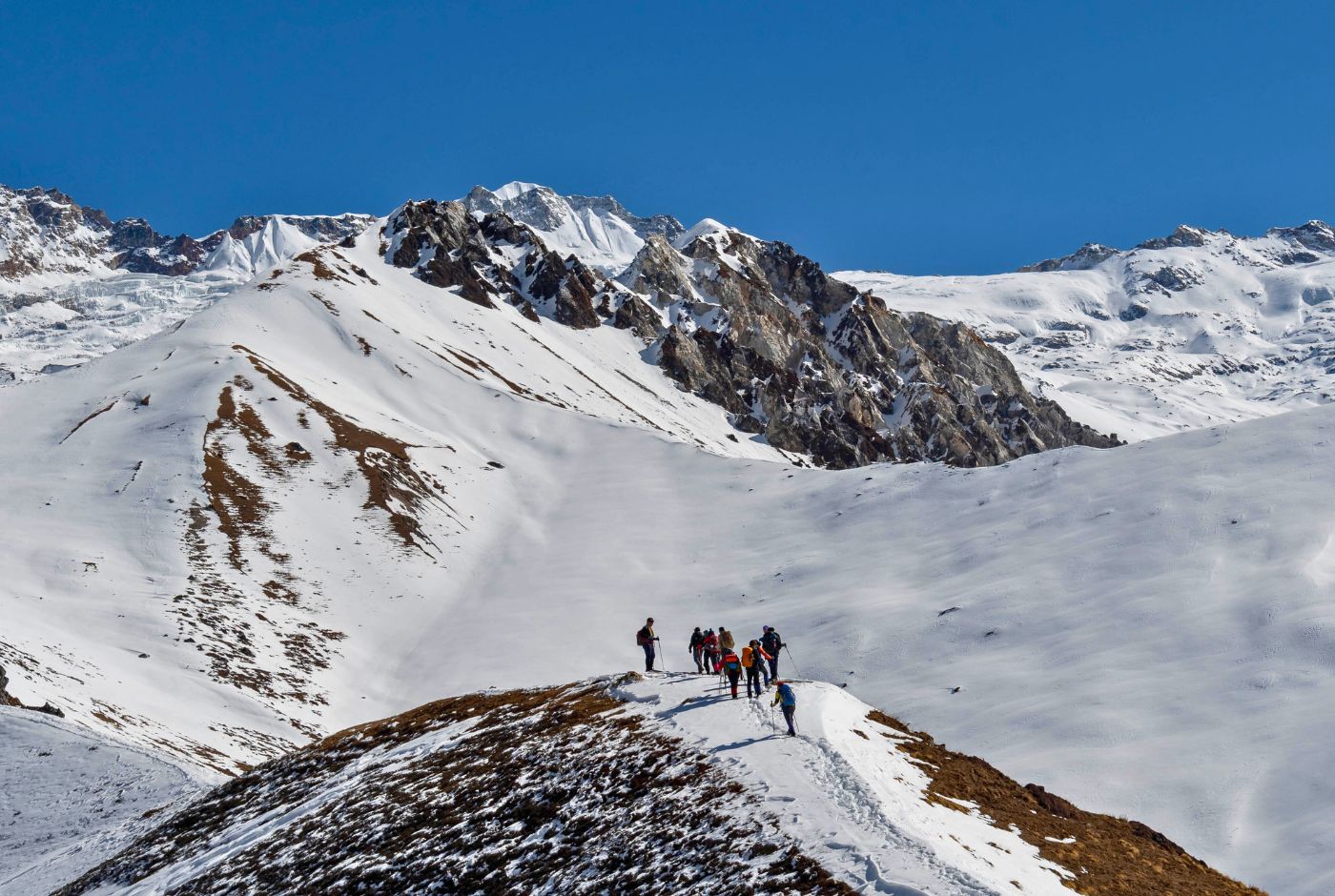
Mount Manaslu, the eighth-highest mountain in the world, is visible from certain points on the trek, showcasing its massive, icy slopes. Naya Kanga, a popular trekking peak, also offers a challenging climb for adventure seekers.
| Peak Name | Height (Meters) | Height (Feet) | Rank | Note |
| Langtang Lirung | 7,234 | 23,734 | 99th | Highest peak in Langtang Himal range |
| Langtang II | 6,596 | 21,640 | - | Located south of Langtang Lirung |
| Dorje Lakpa | 6,966 | 22,854 | 115th | On the Nepal-Tibet border, part of the Jugal Himal range |
|
Naya Kangri (Ganja La Chuli) |
5,846 | 19,180 | - | Popular trekking peak |
| Yala Peak | 5,520 | 18,110 | - | Trekking peak with views of Shishapangma |
| Shishapangma | 8,027 | 26,335 | 14th | Only 8,000m peak entirely in Tibet |
| Ganesh Himal | 7,422 | 24,350 | 78th | Visible from Langtang Valley, on Nepal-Tibet border |
| Paldor Peak | 5,896 | 19,344 | - | Trekking peak in Ganesh Himal region |
| Gangchempo (Fluted Peak) | 6,387 | 20,955 | - | Known for its fluted appearance |
| Tserko Ri | 4,984 | 16,352 | - | Popular day hike from Kyanjin Gompa |
| Jugal Himal | 5,895 | 19,341 | - | Extends into Tibet |
Another mountain is Ganesh Himal, which is even taller at 7,422 meters. It's named after the Hindu god Ganesh because its shape is said to look like an elephant's head. On clear days, you can see this mountain shining in the sunlight.
Some other peaks you can see along the Langtang route are Langshisha Ri, Yala Peak, and Gangchempo.
Among every natural wonder of Nepal, Langtang Trekking is something that the country can boast of with towering mountain peaks.
Spotting Yaks and Enjoying Fresh Yak Cheese
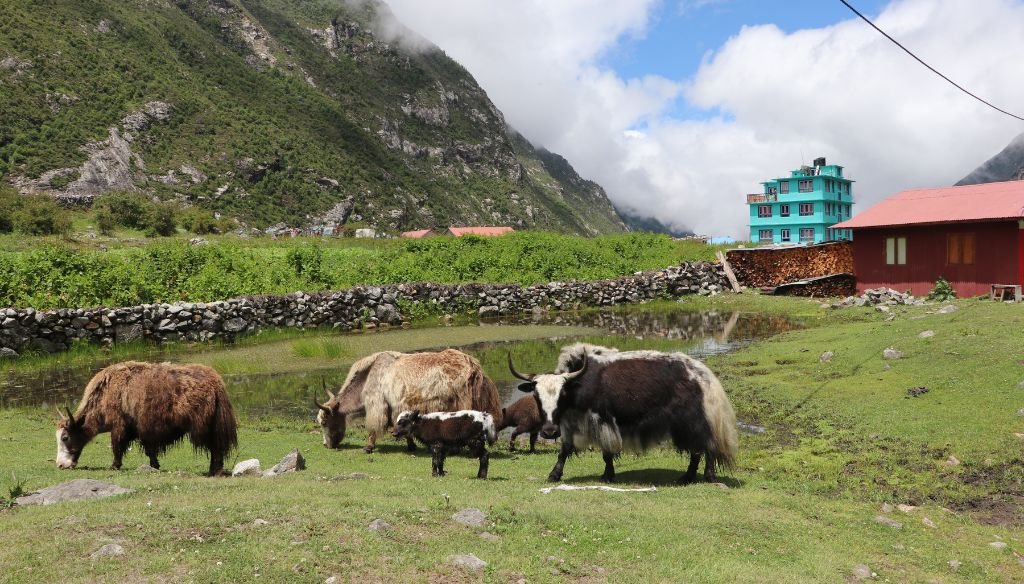
Traveling in the Langtang gives you a great chance to see Himalayan yaks in their natural habitat. As you walk through the valley, especially near Kyanjin Gompa, you’ll spot yaks grazing on the green pastures. These scenes are not only beautiful but also offer a peaceful experience.
Langtang is famous for its yak cheese, which many tourists enjoy. You can try fresh yak cheese and even yak meat during your trek. The sight of yaks and the chance to taste these traditional dairy products add something special to your journey in Langtang Valley.
Best Trekking destination in Langtang Region
There are several routes varying difficulty levels – easy, moderate, and challenging. Based on its popularity, the top 5 best treks in the Langtang Region are the Tamang Heritage Trail, Langtang Valley Trek, Helambu Trek, Gosainkunda Trek, and Ganja La Pass Trek.
Langtang Valley Trek: Best Trek of Langtang
Most tourists prefer to go to the Langtang Valley Trek for the classic Himalayan experience in Langtang. The trek takes you to the laps of the Himalayan Mountains within a short period of 10 days. As the trailhead lies close to Kathmandu, you get to reach the mountains within a short period.
The Langtang Valley trail takes you inside the biodiverse and ecologically rich Langtang National Park. The park is home to endangered wildlife like the Red Panda, Himalayan Tahr, Clouded Leopard, Snow Leopard, etc. The park is covered with thick forests of rhododendron, pine, and oak.
When the country suffered from a devastating earthquake in 2015, Langtang Valley was one of the worst-hit trekking spots. One can still see the destruction wrought by the natural disaster on the trail. The Langtang Village, which falls on the route, was completely flattened. It has been moved to a nearby location, and the locals are trying to piece their life together. New lodges have been built to accommodate the tourists walking that route.
The delightful trek culminates at the scenic Kyanjin Gompa, a small settlement that sprung up around an ancient Buddhist monastery of the same name. Surrounded by the Langtang Range and the Kyangjin Ri, there are several opportunities for day hikes around the village.
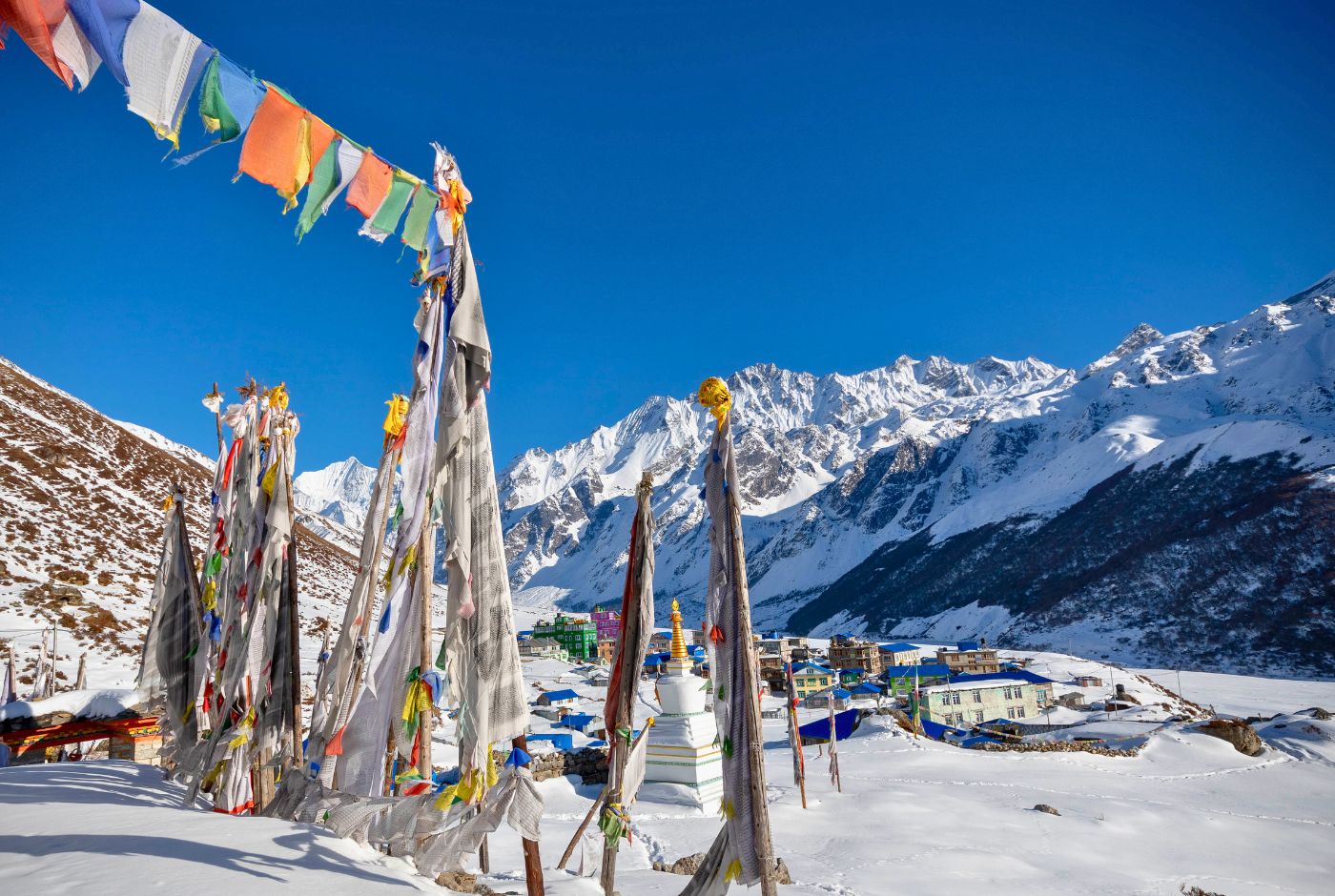
The massive glacier of the Langtang Lirung tumbles down close to the town, and the Tibetan peaks look close enough. One can take a hike to one of the hills surrounding the village – Kyangjin Ri, Tserko Ri, or Chorkari Ri and enjoy 360-panoramic views of Langtang Lirung, Dorje Lakpa, Langshisa Ri, Gang changbu, and the Ganesh Himal Range.
The settlement is home to Nepal's oldest Swiss Cheese Factory. Established in 1955 with the help of the Swiss government, the cheese factory still produces cheese from the milk of yaks found in the area. An excursion to this small factory makes up for an exciting visit.
On the difficulty scale, the Langtang Valley trek is graded easy to moderate-level trek. The highest altitude you reach is Kyanjin Gompa (3830m). If you plan to hike to any hills, expect to get an altitude above 4000 meters.
Highlights of Langtang Valley Trek:
Lama Hotel: Lama Hotel is one of the popular stopovers on the trek. This is a small village with few teahouses.
Langtang National Park: It is the closest and First Himalayan National Park to the capital city of Kathmandu. The trek mostly entails traversing through the national park. The national park is famous for sheltering endangered red pandas, langurs, snow leopards, Himalayan Thar, wild deer, and many more. With a wide range of flora and fauna, the national park houses more than 250 bird species as well. The national park is one of the best destinations for bird watching in Nepal.
Kyanjin Gompa: Kyanjin Gompa is a small village under the shade of the Langtang range. The village offers a grandeur view of the Langtang range as well as its stunning landscapes. Also, the monastery of the Gompa is another highlight of this small village. It offers cultural and spiritual significance to the region.
Kyanjin Ri: Kyanjin Ri is a vantage point at a height of 4,400m from where glorious views of the Langtang range are seen. Along with the view of Langtang Lirung (7,227m), neighboring peaks Yala Peak (5520m), Kinshung (6781m), and Langshisha RI (6285m) are visible.
Cherko Ri (5050m): Cherkori is a significant feature of the Langtang Valley Trek. We head to this point after spending a relaxing day in Kyanjin Gompa. After a short excursion around Kyanjin Gompa, we start our climb to Cherko Ri. It is the highest point of the trek, and from here, we get the chance to see the astonishing Langtang peaks and get hypnotized by its ethereal excellence.
Tamang Heritage Trail: Cultural Heart of Langtang Region
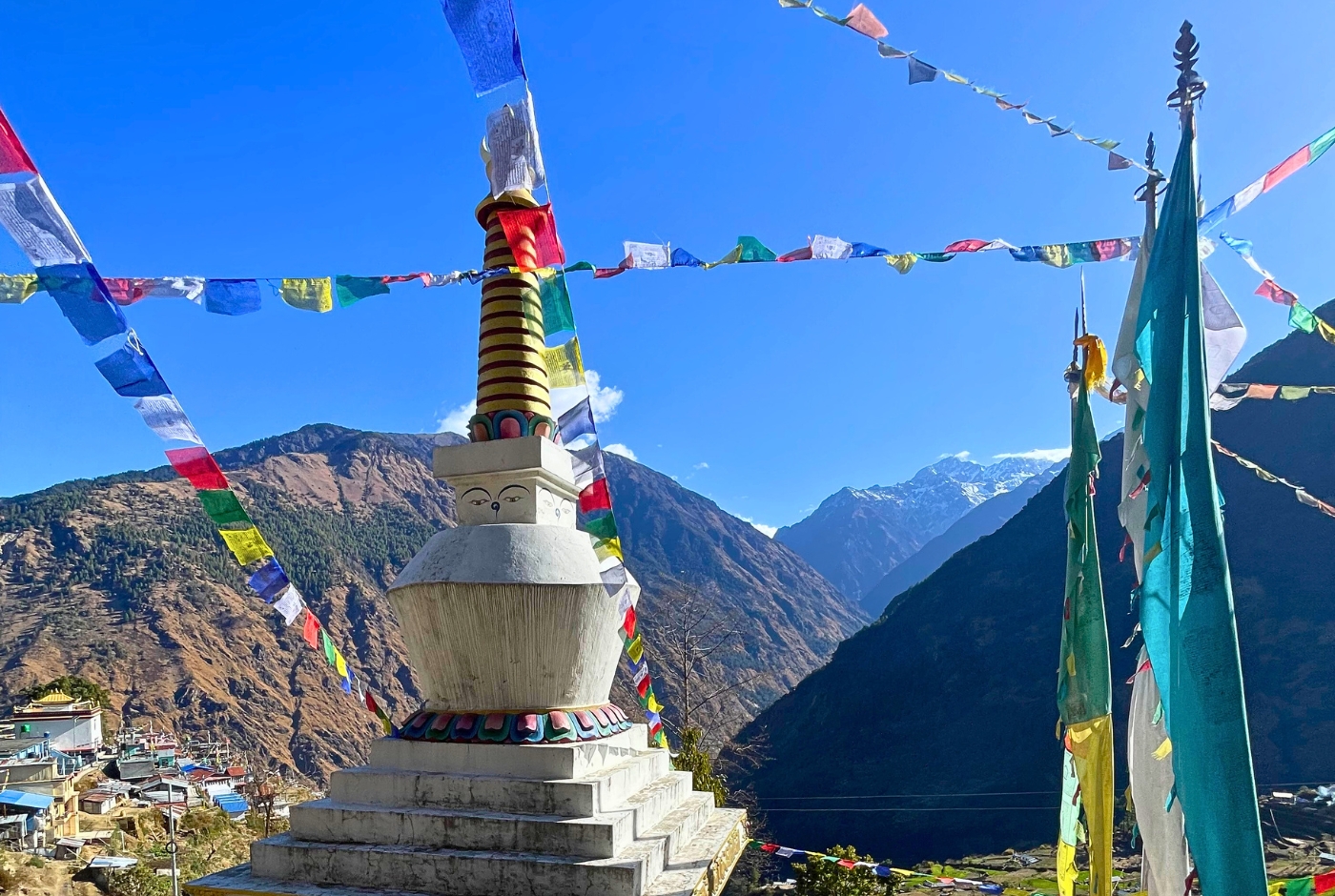
The Tamang Heritage Trail was introduced as a commercial trekking route by the tourism ministry to offer tourists a glimpse into the rich culture of the Tamang, the ethnic community living in the Langtang Region.
While the Everest and Annapurna regions have been popular with tourists, few trekkers know about Langtang. Because of the lack of promotion, this region was not receiving visitors and was behind in development. Thus, new trails like the Tamang Heritage Trail have been introduced to boost the economy and alleviate poverty while offering a wonderful Himalayan experience to tourists.
Tamang Heritage Trail takes you across the traditional villages of Tamang, a mountain tribe that migrated to Nepal from Tibet centuries ago. They are the ancient traders and horseback riders who settled in the Langtang Region.
This community follows Buddhism, and their customs and traditions are similar to those of the Tibetans. Like the Tibetan highlanders, most of them are keen horsemen with their own distinct language.During your trek, you walk past the traditional villages of Syabrubesi, Thuman, Briddim, Gatlang, and Tatopani.
The route is highly scenic and beautiful. The forests are covered with colorful prayer flags, pristine rivers and waterfalls, panoramic mountain views, and traditional villages, which give an insight into the unique culture of Tamang. Get an enriching experience with this adventure.
This trek can be completed in 8 days, according to our itinerary. With its easy trails, anyone who is physically fit and is interested in hill walking is able to complete the trek with no hassle. The altitude does not go beyond 2400m, so there's no risk of altitude sickness.
One can also combine this with the Langtang Valley Trek and extend it for 14 days, Tamang Heritage Trek with Langtang. This combination provides an exclusive offer to experience classic trek and cultural heart of Langtang region.
Helambu Trek: A Nearest trek from Kathmandu
The Helambu Trek takes you on a cultural journey on the outskirts of the Kathmandu Valley. Lying off the beaten path, the trail is yet to be discovered by the usual trekking crowd that visits Nepal each season. The Helambu trek takes you past the villages of Tamang, Sherpas, and Tibetan groups. A short vacation of 9 days is enough to complete this delightful trek.
The starting point of the trek lies in Kathmandu Valley. You leave the city and reach the Shivapuri Hills, which lies in the northern part of the capital. You walk past the verdant Shivapuri National Park and the small settlements of Chisapani and Sundarijal before ascending further to the villages of Khutumsang, Thadepati, and Tarkeghyang. Ama Yangri the viewpoint, at 3771m is the highest point of your trek.
Each night, you stay at a teahouse owned by a local family. You get to observe the rural lifestyle and culture closely and interact with the local villages. The trail goes through rice and maize fields and forests filled with chirping birds and chattering monkeys. There are several Buddhist shrines, meditation caves, and monasteries en route.
You can visit some of the local monasteries and chat with the lamas (monks) living there. The Helambu trail has a sizeable Buddhist population. The trek is a beautiful opportunity to get to know about Buddhist culture in the mountains of Nepal. This trek allows you to observe the preserved Hyolmo culture of the region.
Beginners, as well as experienced trekkers, can efficiently complete this trek. The only requirement for the Helambu Trek is a reasonable level of physical fitness.
Gosaikunda Trek
Gosainkunda is a beautiful and sacred mountain lake that sits like a jewel in the stunning Langtang Region. It is a pilgrimage spot for both Hindus and Buddhists. According to Hindu scriptures, the lake was formed by Lord Shiva when he threw his trident while looking for water to quench his thirst after swallowing the deadly poison during the epic saga Manthan (churning of the ocean). One can still see his trident in the middle of the lake.
Surrounded by tall snow-covered mountains, the lake is surrounded by several smaller lakes – Saraswati Kunda, Bhiarav Kunda, Surya Kunda, etc. A prominent religious fair is held on the precinct of the lake during Janai Purnima (full moon festival celebrated around July-August). Brahmins flock to the lake to change their sacred thread and take a purification dip. The local shamans also gather at the lake during this time, as this is supposed to be an auspicious time for initiation rites.
Just above the lake is the breathtaking Laurebina Pass, from where one can enjoy 360-degree views of the Himalayan range. Graded moderately, the route to the lake is filled with manageable as well as difficult sections. The Gosainkunda Lake lies at a high altitude of 4,480 meters, and one has to be careful of altitude sickness.
Ganja La Pass Trek: Adventerous Trek in Langtang
If you are looking for a short but challenging Himalayan trek, the Ganja La Pass Trek offers you the perfect opportunity. The hike follows the Langtang Valley trail and goes past the Langtang National Park, the first Himalayan National Park to Kyangjin Gompa. From Kyangjin Gompa, the trail climbs further to the challenging Ganja La mountain Pass.
Snow-covered and icy, the crossing of the Ganja La tests your endurance level to the maximum. The pass, lying at an altitude of 5130m, is exciting to traverse, with its trail covered with snow and ice. To reach the pass, you walk through the ethnic villages of the Tamang and forests filled with rich flora and fauna.
The scenery is breathtaking, and the mountain views are magnificient. As Tibet lies close to the Langtang region, you get to view the Tibetan peaks along with the majestic peaks of the Langtang Range and the Rolwaling Himal en route.
The highlight of your trek is the crossing of the Ganja La, Kyangjin Gompa, and a visit to the memorial of the earthquake victims at Langtang Village. The overnight stays at the ethnic villages of the Tamang and Sherpa give you a peek into their lifestyle and culture. You return via the Helambu route, passing the towns of Tarkegyang, Dhukap, Sermathan, and Melamchi.
The trail to Ganja La Pass is a challenging trail that can be accessed from Kathmandu within a short period. If you are pressed for time but still desire a challenging Himalayan trekking experience, the Ganja La Pass Trek is for you.
Why choose these five treks in the Langtang Area?
Treks to the Langtang Region are easily accessible from Kathmandu, making the region a favorite among trekkers with limited time. Most of the trailheads lie within a 7-8-hour drive from Kathmandu.
Some of the trailheads, like Melamchi and Chisopani, can be accessed directly from Kathmandu Valley. There is minimal risk of altitude sickness on these treks as most trails lie below 5000 meters.
The region is facilitated by teahouses or mountain lodges run by local communities or families. Though basic and utilitarian than city hotels, these teahouses offer you shelter from the cold, warm bed, food, and electricity to charge your devices. There are mobile networks and internet connectivity at the lower elevations.
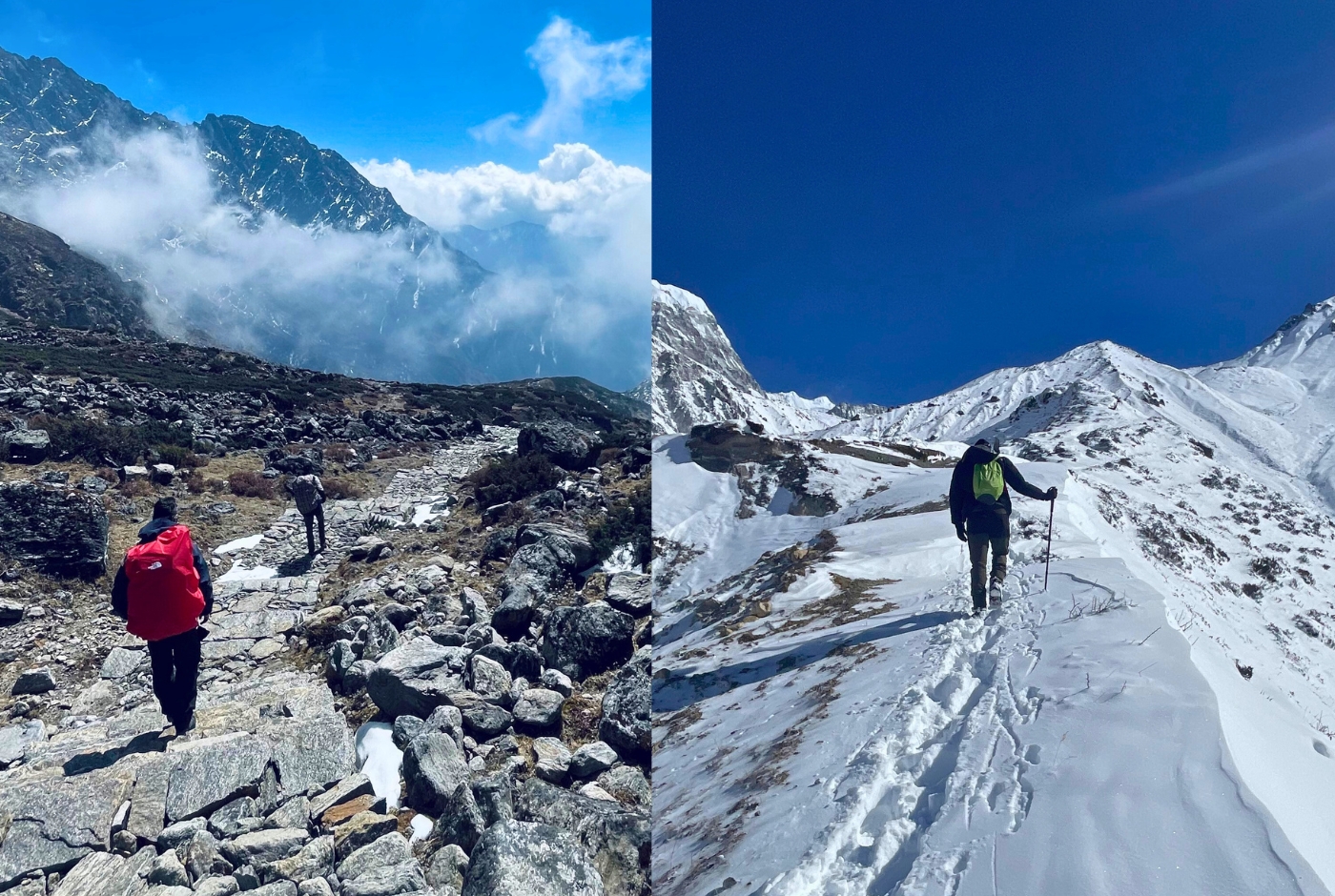
Off-beaten path experience
Many trekkers dream of visiting Everest and Annapurna, but if you want a quieter and more peaceful experience, the Langtang Region Trek is perfect for you. This trek offers beautiful, natural trails that take you through the quiet and simple Langtang Valley.
As you walk, you'll see the everyday life of the local people, enjoy the rich culture, and discover many kinds of plants and animals. The paths are less crowded, so you can really enjoy the beauty of nature without interruptions.
Langtang: A Safe and Low-risk Trek
The Langtang Region Trekking is a wonderful choice for anyone who loves nature and wants to experience the mountains safely. It’s especially great for beginners or those who want a less challenging adventure.
One of the reasons the Langtang region is safer is that the paths are wide and well-marked, making it easier to walk without worrying about slipping or falling. The trail is not too steep, and the chance of encountering falling rocks is very low.
Another reason the Langtang is safer is that the altitude doesn’t get too high, which means there’s less risk of getting altitude sickness. This makes it a comfortable trek where you can enjoy the beautiful scenery without feeling unwell.
The Langtang Trek offers a perfect blend of adventure and safety, making it a great choice for anyone looking to explore the mountains in a peaceful and secure way.
Family-friendly treks in the Langtang
Langtang Region, known to only a few trekkers, is less crowded and serves as the best trekking option and holiday trek for families. The beautiful Langtang valley and friendly local Tamang will make your trekking journey as beautiful as the Langtang's natural beauty.
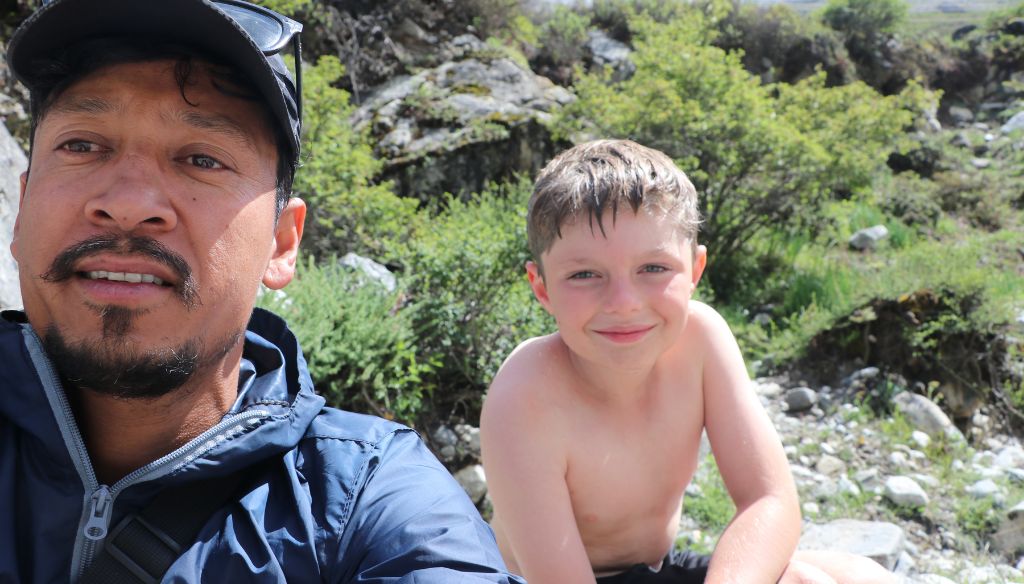
Along the trek, families can stay in comfortable teahouses that offer warm meals and cozy beds, making the journey easy and enjoyable. An ideal destination for families who love to indulge in local culture and traditions.
A Moderately Easy Trek
The Langtang Region trekking is easier compared to more challenging treks like the Everest Base Camp or Annapurna Base Camp treks. While it is considered an off-beaten trail, it is still more accessible and less strenuous. Trekkers typically need to walk only 6-7 hours a day, which is less demanding than the longer and steeper days required on other treks.
The terrain in the Langtang region is gentle and not too steep, making it suitable for beginners and those with moderate fitness levels. The path takes you through forests, leading to high green pastures and the moraine of glacier peaks, but without the extreme climbs found in other mountain regions.
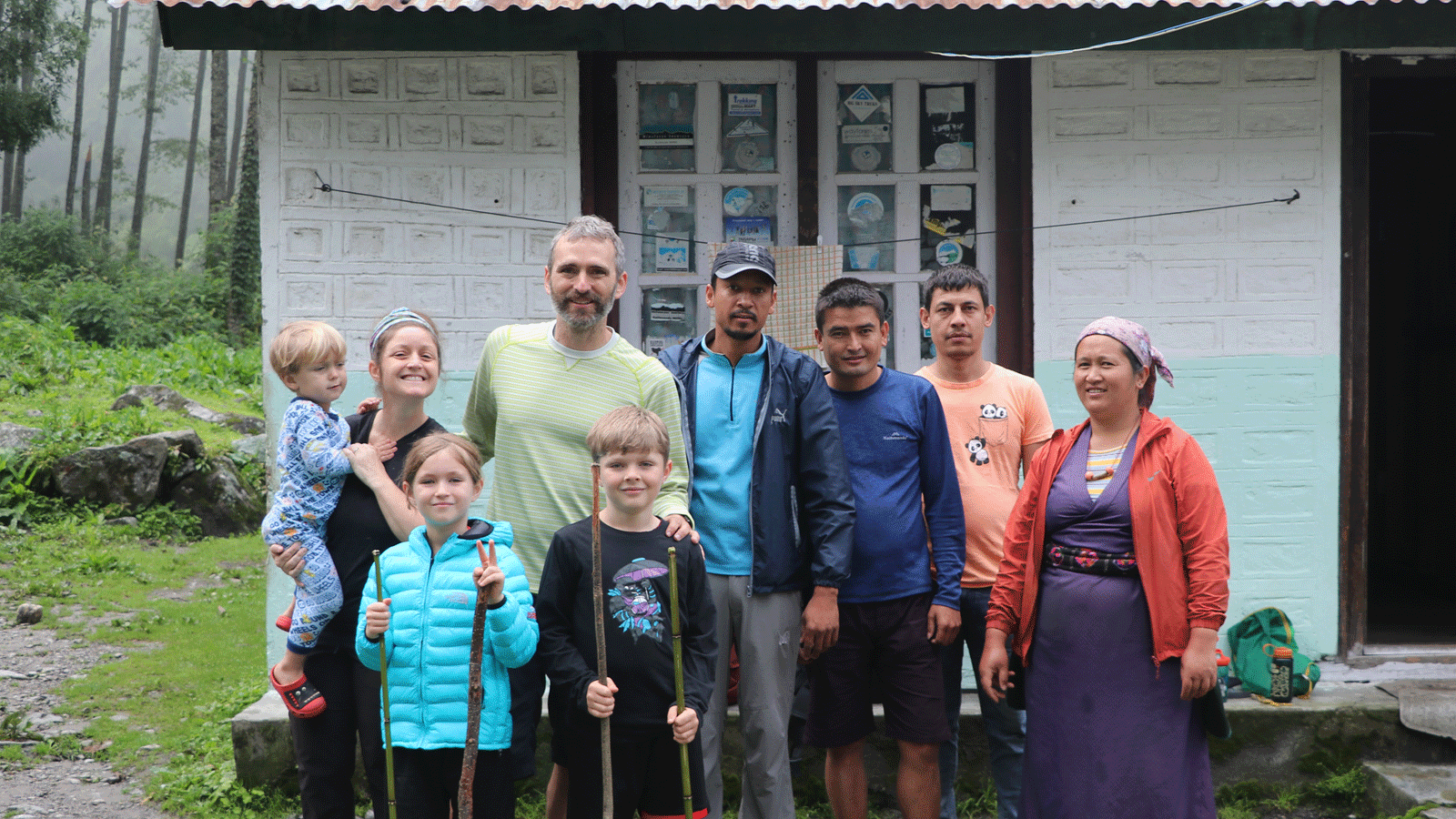
One of the key benefits of doing a trek in the region of Langtang is that it doesn't require prior trekking experience. Even first-time trekkers can enjoy this route without extensive preparation. The short and easy nature of the trek, combined with the breathtaking scenery, makes it a rewarding experience that anyone with decent fitness can complete.
Reasonably affordable trek: Langtang
The Langtang Region is a great choice for trekkers who want to see beautiful mountains, lakes, and glaciers and experience the Tamang culture without spending too much. It’s an affordable trek with reasonably priced food and accommodation.
One big reason it’s budget-friendly is that no flights are needed to reach the starting point. Most people travel by bus or local transport, which keeps the costs low. The only time the trek might get more expensive is if you choose to hire private transport, but even then, it’s still cheaper than many other treks in Nepal.
For those looking for an amazing trekking experience that won’t break the bank, the Langtang Valley Trek is a perfect option. It offers all the beauty of the mountains and local culture at a much lower cost.
If you are on a short holiday but still want to experience an authentic Himalayan trek, you can choose any of the hikes mentioned above. So what are you waiting for? Put on your hiking boots, grab your gear, and get going! The Langtang trails are waiting for you!
Festivals Celebrated around Lantang
Festivals are a vital part of life in the Langtang region, reflecting the deep-rooted spiritual beliefs and communal spirit of its inhabitants. These celebrations offer visitors a unique opportunity to witness the vibrant traditions of the local ethnic groups and to participate in the rituals that have been passed down through generations.
Losar (Tibetan New Year)
Lhosar, also known as Tibetian New Year, is a big festival in February or March that celebrates the start of a new year. People of Langtang clean their houses well to get rid of bad luck from the last year, make food offerings to local gods, and enjoy meals with family. They also dance, sing, and wear colorful traditional clothes. A special dance called "Cham" is performed by monks wearing masks, showing the victory of good over evil.
Jannai Purnima Festival: Raksha Bandhan
Janai Purnima in Gosaikunda is an important Hindu festival celebrated at the sacred Gosaikunda Lake. It happens during the full moon in August. People from Nepal and India travel to this holy lake to take a dip, believing it will cleanse their sins and bring blessings. The festival is also called Raksha Bandhan and honors Lord Shiva. The area becomes lively with prayers, rituals, and offerings, making it a unique and spiritually rich event.
Yartung: Horse Racing Festival
Yartung happens in the summer and includes horse races. It's a time for people to wear their best clothes and come together. The races are a big part of the festival, showing the community's strength. People pray for good crops and end the festival with big meals and sharing blessings.
Gunla Festivals
There are more festivals like Gunla, a holy month where Buddhists go on pilgrimages and pray. Buddha Jayanti is another day when people remember the life of Gautama Buddha, with special decorations and rituals at monasteries.
Ethnic Groups of the Langtang
The Langtang region is a place with many different groups of people, each with their own special traditions and ways of life. The main groups are the Tamang and Sherpa people, but there are other groups too, each adding to the area’s rich mix of cultures.
Tamang People
The Tamang are the biggest group in Langtang. They came from Tibet long ago and have a strong connection to the land. They speak the Tamang language and follow a mix of Tibetan Buddhism and old nature beliefs.
Tamang villages like Gatlang and Thuman are known for their stone houses, colorful festivals, and friendly people. They are good at wood carving and weaving. Important festivals for them include Mani Rimdu and Losar, which show their religious beliefs and community customs.
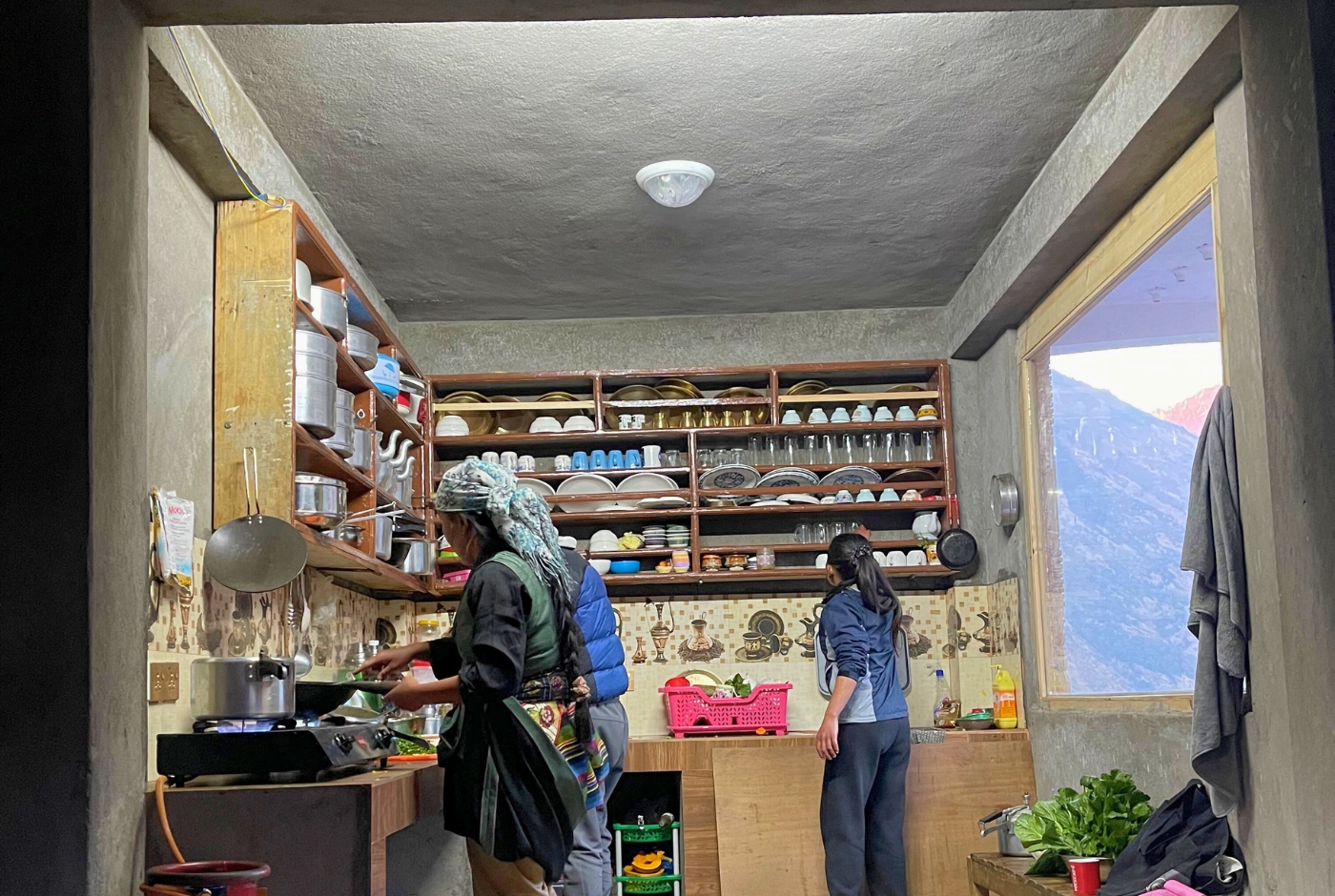
Tibetan Influence and Sherpa Communities
The Langtang region is close to Tibet, which influences the local Sherpa people a lot. The Sherpas moved from Tibet hundreds of years ago. They are famous for being great climbers and have kept their rich culture, which is deeply tied to Tibetan Buddhism.
Sherpa villages like Kyanjin Gompa have traditional buildings, monasteries, and lots of prayer flags. They celebrate festivals like Mani Rimdu and Losar too. Their monasteries are important places where they learn and practice their religion.
Gurung and Hyolmo People
In addition to the Tamang and Sherpa, the Langtang region is home to other ethnic groups such as the Gurung and Hyolmo people. The Gurungs share many cultural similarities with the Tamang, including music and dance. The Hyolmo, or Yolmo people, speak their own language and have a distinct culture, predominantly residing in the Helambu area, which is closely linked to Langtang.
All these groups together make Langtang a very special place with a mix of different traditions that make the culture very rich. Visitors can see and learn a lot about how diverse the Himalayas are.
Best Spots for Photography on the Langtang Region
The Langtang region is perfect for photographers because of its beautiful mountains, calm lakes, and colorful villages.
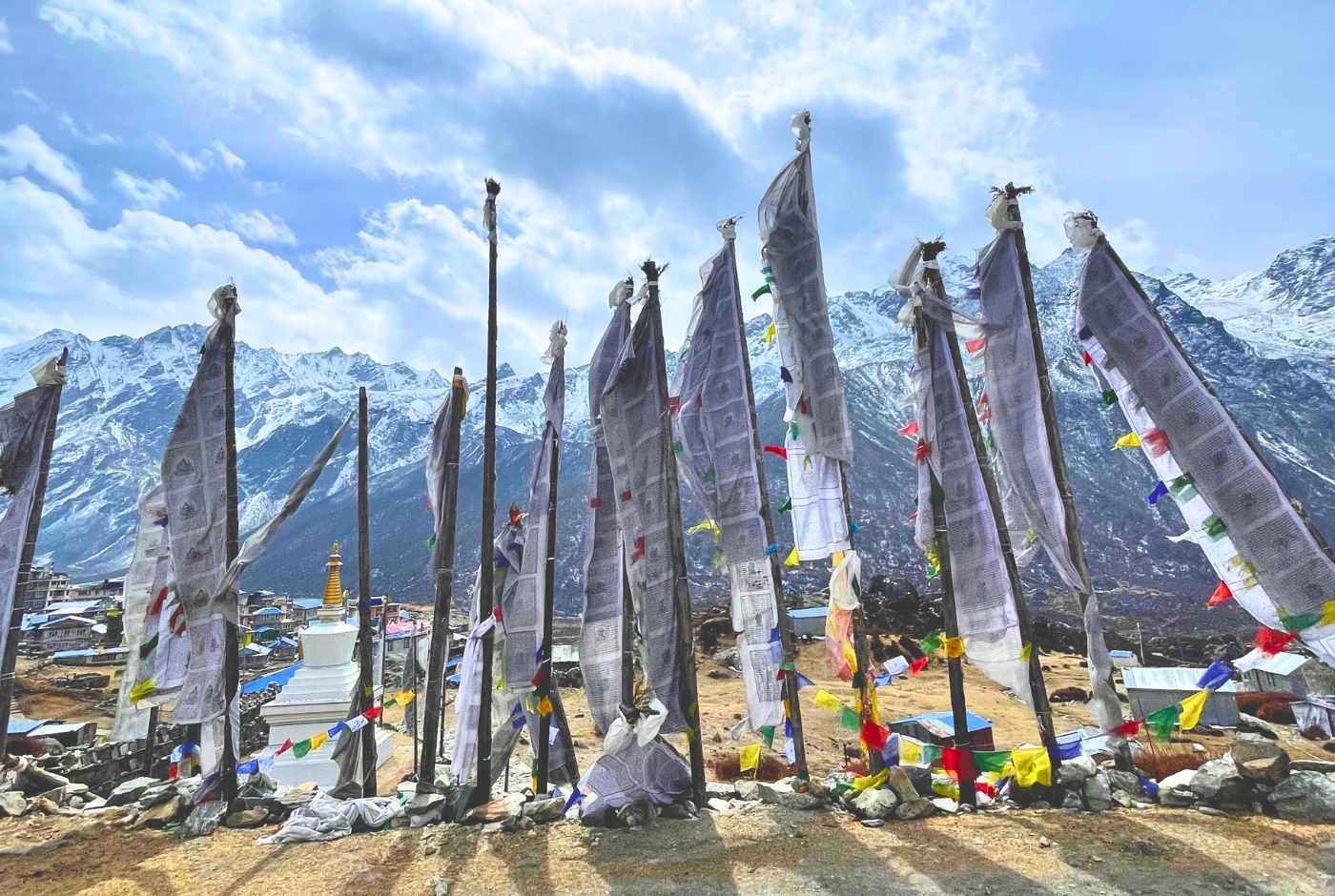
Kyanjin Gompa (Langtang)
- Kyanjin Gompa is a great spot for taking pictures. It's a small village high up in the mountains. You can see big mountain peaks and a pretty monastery here.
- Best time: Morning or late afternoon is the best time to take photos because the light is very nice then.
Gatlang (Langtang)
- A traditional Tamang village known for its vibrant culture and stone houses, set against a backdrop of rolling hills.
- Best Time: Anytime during the day, especially when village life is in full swing.
Langtang Valley (Langtang)

- Langtang Valley is also called the "Valley of Glaciers." It has green meadows, thick forests, and icy areas which look really good in photos. You might also see rare animals like the red panda here, which makes for great wildlife photos.
- Best time: Throughout the day, but especially in the morning and evening.
Gosaikunda Lake
- Gosaikunda Lake is very beautiful and important to some religions. It's up high and surrounded by mountains. The lake shows reflections of the mountains, which looks amazing in photos.
- Best time: Early morning light is the best to capture its beauty.
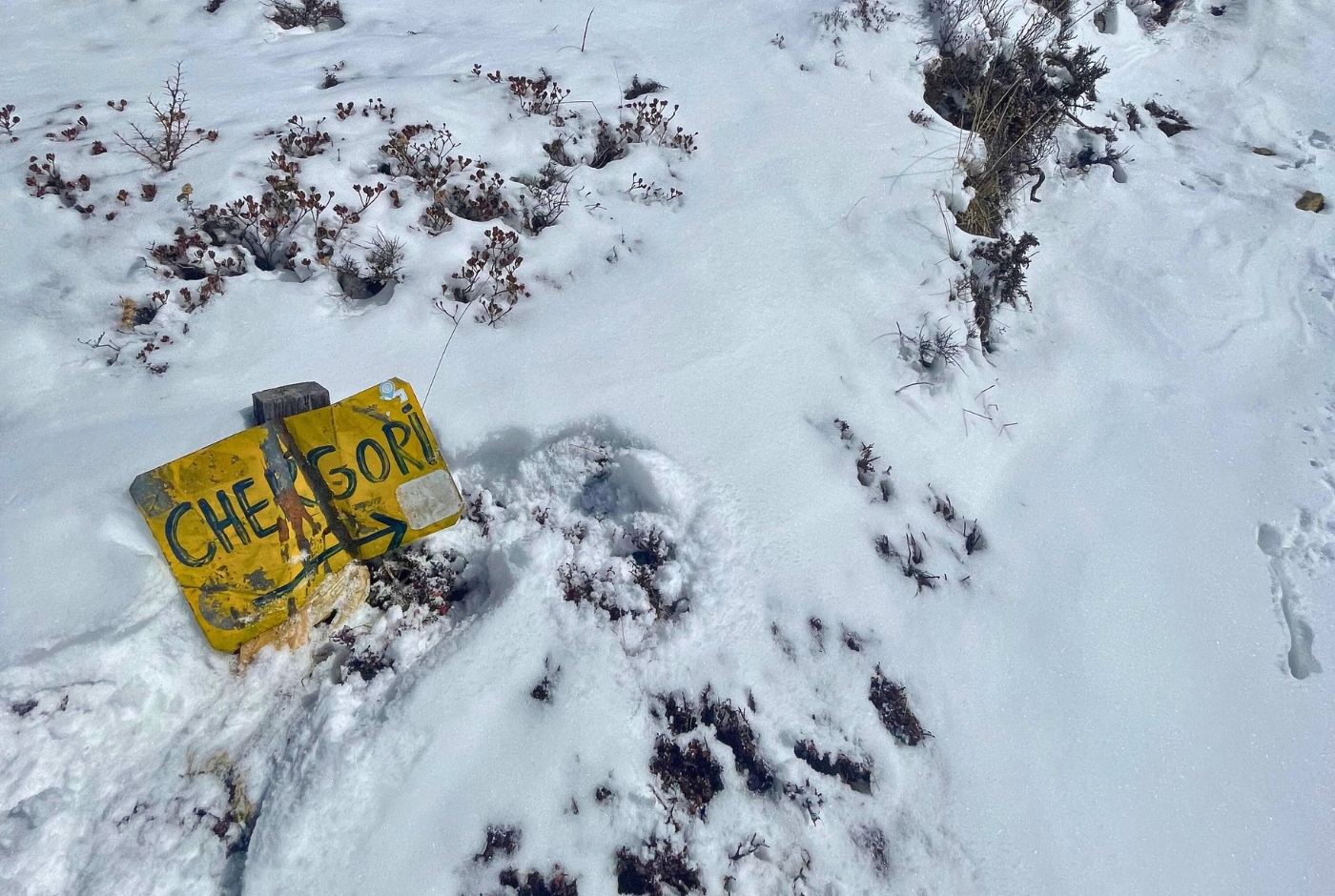
Tsergo Ri
- Tsergo Ri is a high peak that offers amazing views of big mountains around. It's a tough climb to get there, but the view is worth it.
- Best time: Sunrise and sunset are the best times to take pictures because the sky changes colors beautifully.
Ama Yangri (Helambu)
- The highest point in the Helambu region, offering 360-degree views of the Himalayas, including Langtang, Ganesh Himal, and even Everest on clear days.
- Best Time: Early morning, when the peaks are bathed in soft light.
Briddim (Langtang)
- Another Tamang village, rich in culture and surrounded by terraced fields and forested hills.
- Best Time: Late afternoon, when the village is beautifully lit by the setting sun.
Nagthali (Langtang)
- A high-altitude viewpoint offering spectacular views of the Langtang and Ganesh Himal ranges.
- Best Time: Morning, when the light is best for capturing the expansive views.
Preparation Checklist for Langtang Trekking
Physical Preparation:
- Cardiovascular Training
- Strength Training
- Flexibility and Balance Exercises
Acclimatization:
- Gradual Ascent Planning
- Hydration
- Altitude Sickness Awareness
Health and Nutrition:
- Vaccinations
- Balanced Diet
- First Aid Kit
Mental Preparation:
- Research on the Langtang Region
- Mental Resilience
Final Preparations:
- Documentation Check
- Emergency Contacts
- Pre-Trek Briefing
By following these preparation checklists, you can get fit for Trekking in the Langtang region.
All you need to Know about Langtang: A complete guide
Packing List for Langtang Hike
Important Documents
When you are planning to go trekking around the Langtang area, it is crucial to have all the necessary documents and items to be prepared. Here are some of the things you should consider
Valid Passport (For Foreign Nationals): Valid passport and multiple copies
Langtang Region Trek permits
You do not require a restricted area permit for the Langtang Region Trek as Langtang doesn't fall under the restricted areas of Nepal. However, a Langtang National Park permit is a requirement that you can purchase from Dhunche, and the cost of permits is the same throughout the season. You might also be fined if you trek without a license on the trail.
TIMS Card: Obtainable from the tourism office in Kathmandu by filling out a form and paying a fee.
Langtang National Park Entry Permit: This permit is available at the entrance of Langtang National Park.
These permits can be obtained either in Kathmandu at the Nepal Tourism Board or at entry points like Syabrubesi or Dhunche.
If you're trekking through areas like Helambu and entering Shivapuri National Park, an additional permit for Shivapuri may be required, depending on your specific trekking route.
Travel Insurance
Valid Visa Document (For Foreign Nationals)
Passport-Sized Photos: Several passport-size photos it is necessary for obtaining permits
Note: Store this paper and essential documents in a waterproof bag as Nepal weather can change at times, and it can get damaged by rain or any accidental cause. Also, keep digital copies of these documents on your phone for easy access and backup.
Essential Items to carry while in Langtang
|
General Gear:
|
Clothing:
|
Accessories:
|
|
Toiletries & Personal Care:
|
Head Gear:
|
Footwear:
|
You should also bring additional items like maps, snacks/energy bars, a camera, a Notebook, and a pen.
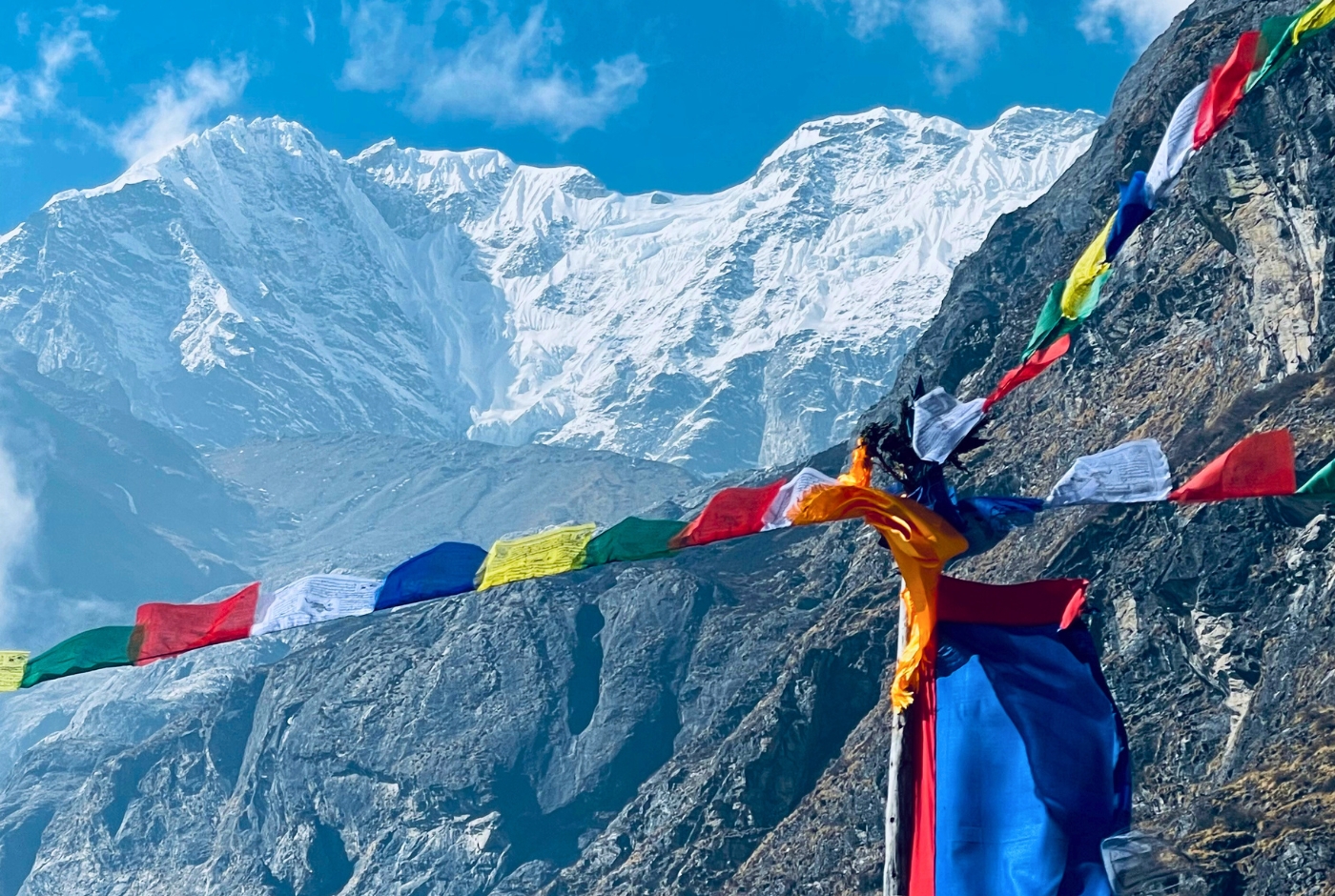
Langtang Trek Difficulty: A moderate Challenge
The Langtang region trekking is generally moderately difficult. This means it's not too hard but does have some tough parts. Good health and some practice walking or hiking before you go are important. The paths go up and down, and some climbs can be steep. Both new and experienced trekkers can enjoy this area if they prepare a bit first.
The best time to do Langtang trekking
The Langtang region is suitable for trekking throughout the year, each season offering unique experiences and landscapes. Here's a breakdown of what to expect during each season:
Langtang in Spring:
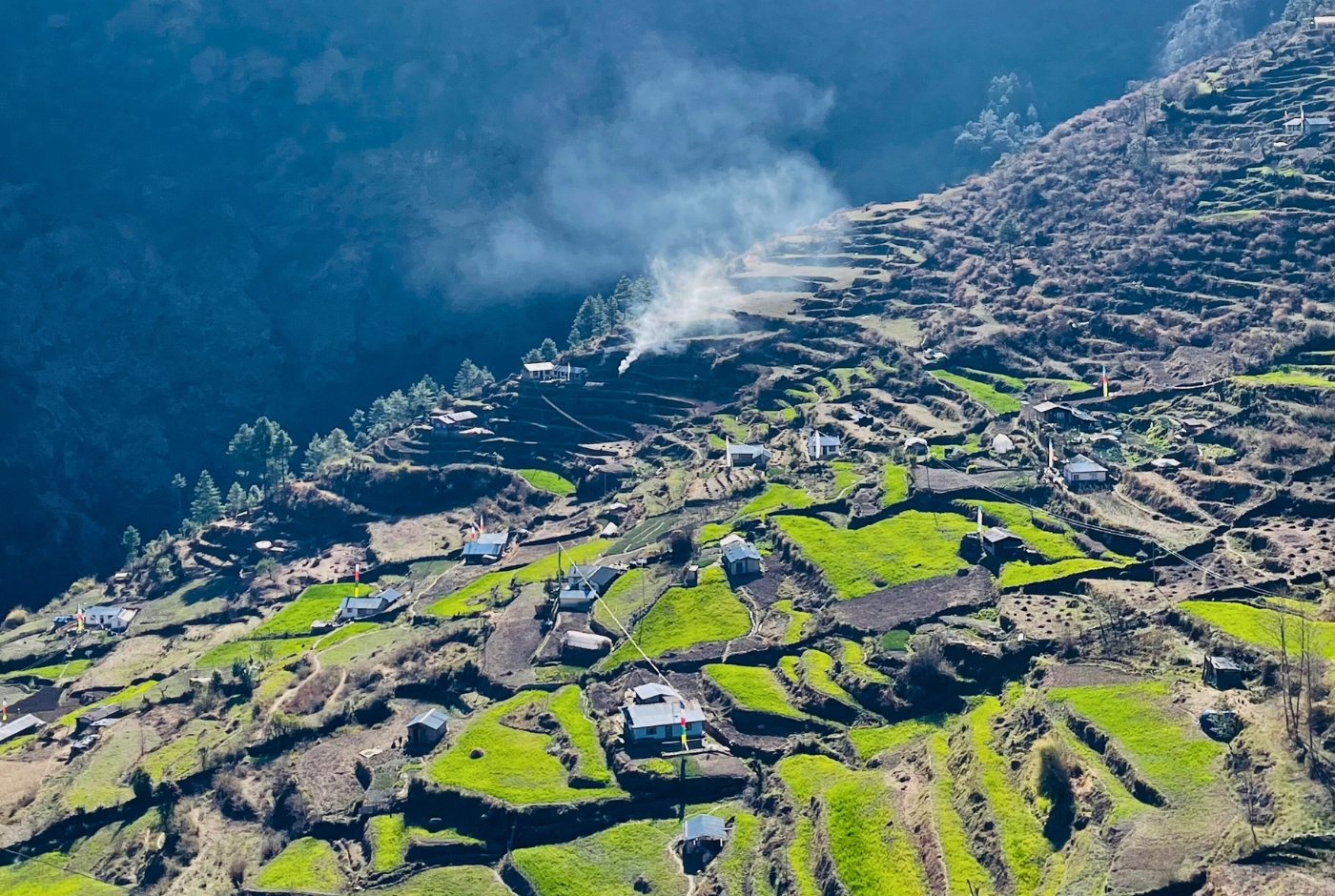
Spring in Nepal spans from March to May. During this time, temperatures in the Langtang region range from 12 to 20 degrees Celsius, providing moderate conditions ideal for hiking. Days are comfortably warm, while nights can be cool. Spring also marks the blooming season, filling the trails with vibrant sprouts and the forests with red and pink rhododendron blossoms. This season is a picturesque time to enjoy the natural beauty and panoramic mountain views.
Langtang during the Autumn Season:
Autumn, from September to November, is a favored trekking season in Nepal. This period offers clear blue skies, crisp air, and stunning mountain views. Temperatures typically range from 10°C-15°C (50°F-59°F). With low precipitation during autumn, the visibility is excellent, offering crisp views of the valleys and Himalayas. The trails are more populated, as this is the peak trekking season, providing opportunities to meet other trekkers.
Langtang Region during Summer/Monsoon Season:
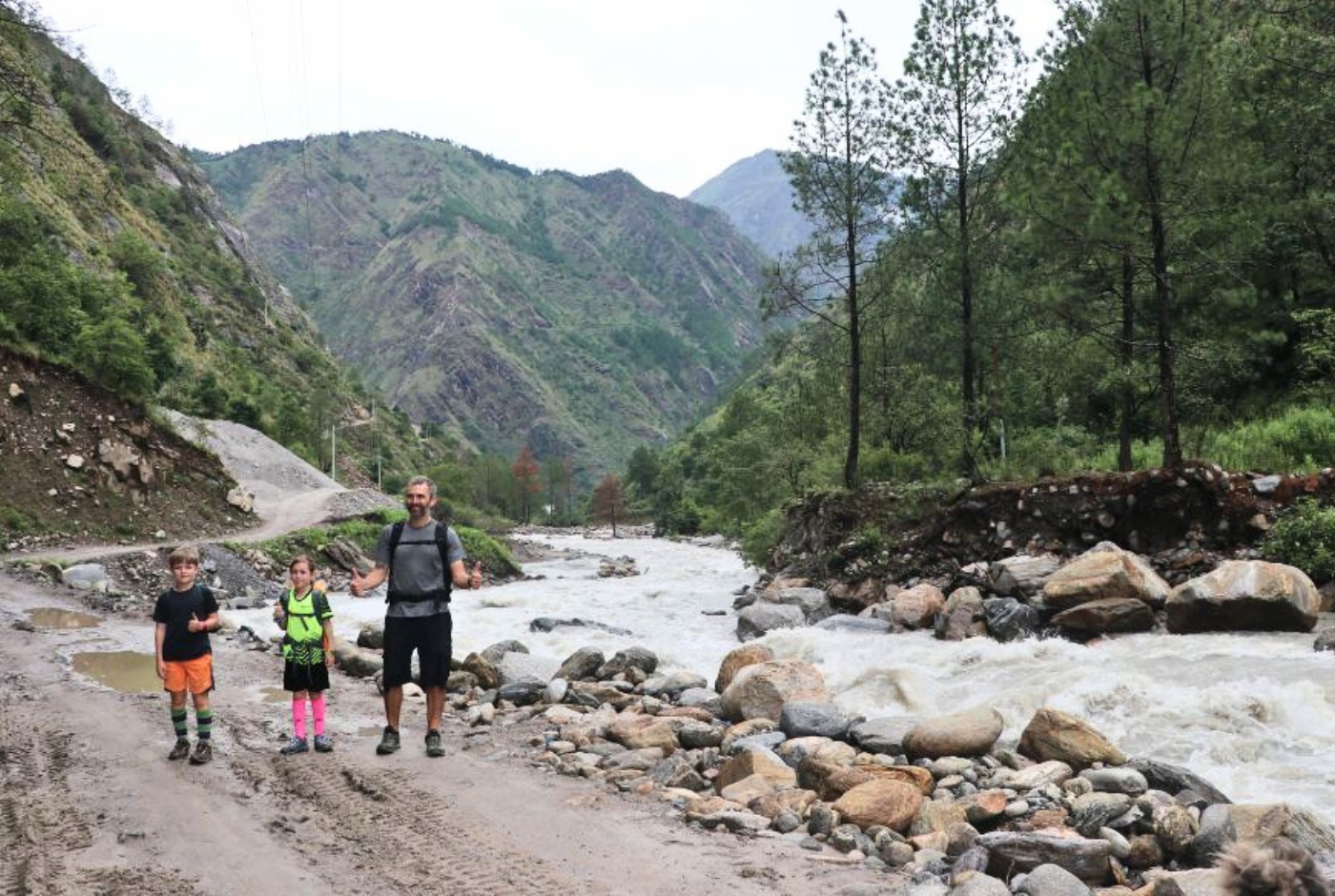
The summer and monsoon seasons overlap from June to August in Nepal. During these months, temperatures are high during the day but moderated by monsoon rains. Although the rain can make the trails muddy and attract leeches, the lush, rain-washed surroundings are vibrant. Post-rain clearings occasionally offer the clearest views of the mountain ranges. Summer is also a time when local communities are active in agricultural pursuits, offering a glimpse into local life.
Langtang during the Winter Season:
Winter in the Langtang region, from December to February, features cold, biting weather with the potential for snow-covered landscapes and clear, blue skies. The colder months might also bring periods of snowfall, harsh winds, and a stark but beautiful environment. This season allows for serene exploration of the snow-draped region, albeit with potentially challenging weather conditions.
Each season in the Langtang region offers a distinct trekking experience, from blooming springs and clear autumns to lush monsoons and serene winters, making it a versatile destination for year-round adventure.
Transportation options for the Langtang Region
To reach the Langtang region, travelers have several options, each offering a different experience:
By Bus:
For those looking for a more immersive and budget-friendly option, taking a local bus is ideal. Buses depart from Machhapokhari, Balaju, located just a 10-minute drive northwest of Thamel, Kathmandu. The bus journey to Syabrubensi, the gateway to the Langtang treks, takes about 7-8 hours depending on traffic.
This mode of travel offers an opportunity to interact with local commuters and experience everyday Nepalese life.
By Private Vehicle:
For added convenience, hiring a private 4WD vehicle like a car, Jeep, or Scorpio is an alternative. Although more costly than the bus, it provides comfort, flexibility, and can be quicker without the typical delays of public transportation.
By Helicopter:
Although direct flights from Kathmandu to Langtang are not available, you can opt for a helicopter ride. This option provides a quick, luxurious, and thrilling journey over the breathtaking landscapes of Nepal's valleys and hills.
Accommodation in the Langtang Region
Langtang Region is filled with beautiful and warm teahouses. The massive earthquake of 2015 destroyed Langtang, which is mostly among the trekking regions of Nepal. However, the destruction did not stop its progress. Now, more than 90% of the teahouses have been rebuilt, and the region is booming more than at any other time.
The rooms at the teahouses are basic yet prepared, cautiously recollecting the solace of the trekkers. Similarly, there are private washrooms at all the overnight stops aside from at Lama Hotel. Besides, because of less traffic, trekkers don't need to manage inaccessibility as well. All in all, teahouses are another fun thing to experience while on the trek to Langtang.
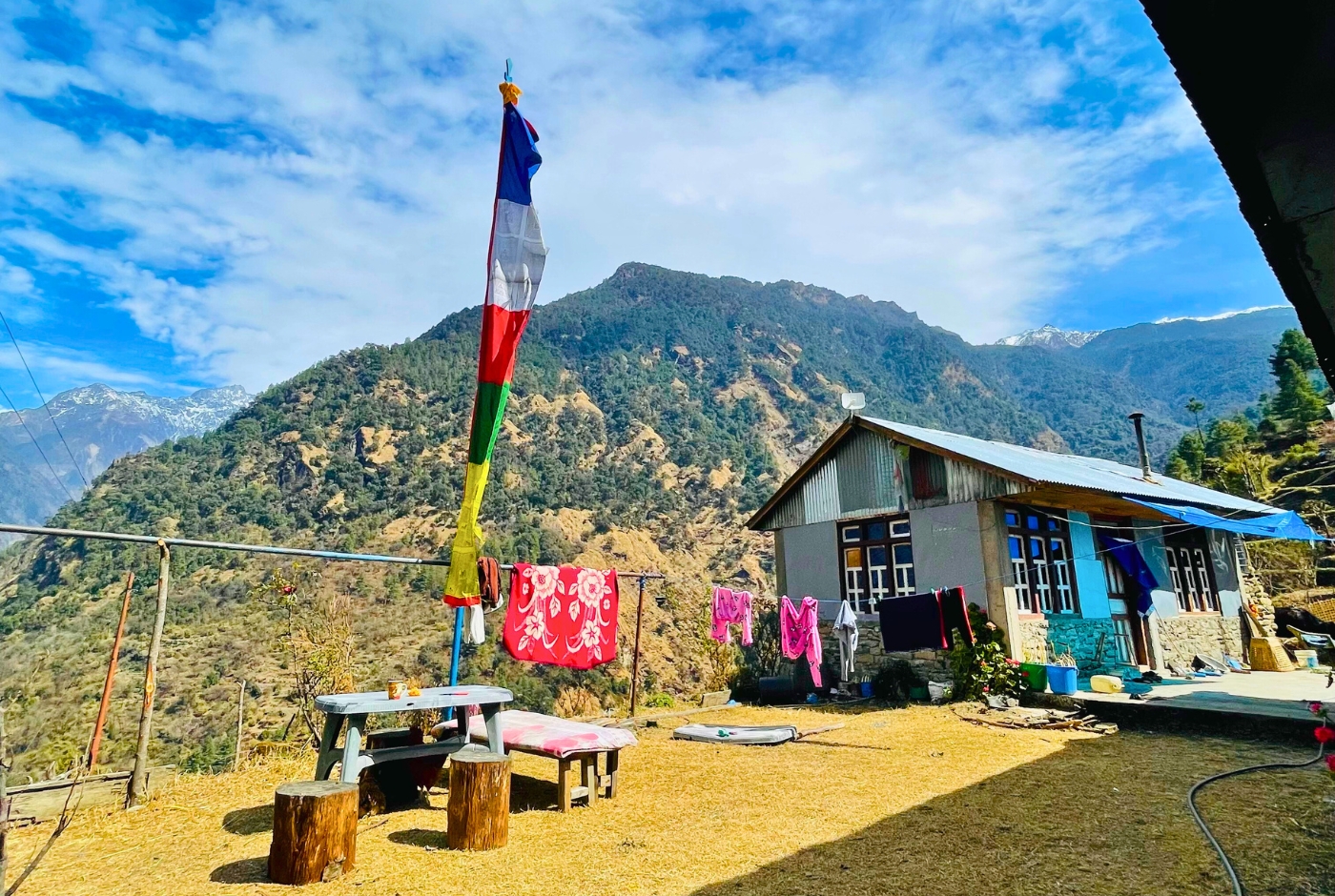
Teahouses and Lodges:
Teahouses and lodges are the common type of accommodation one will find when they are in the Langtang Region. These types of accommodation provide basic facilities for trekkers and visitors. There, trekkers can find simple rooms to stay and twin beds. Bathrooms are generally shared. Some of them even offer private bathrooms at a premium cost.
Guesthouses:
In larger towns like Syabrubesi, guesthouses do provide slightly more upscale accommodations than teahouses, including amenities like hot showers and WiFi, which cater to a range of trekkers.
Foods in the Langtang Region
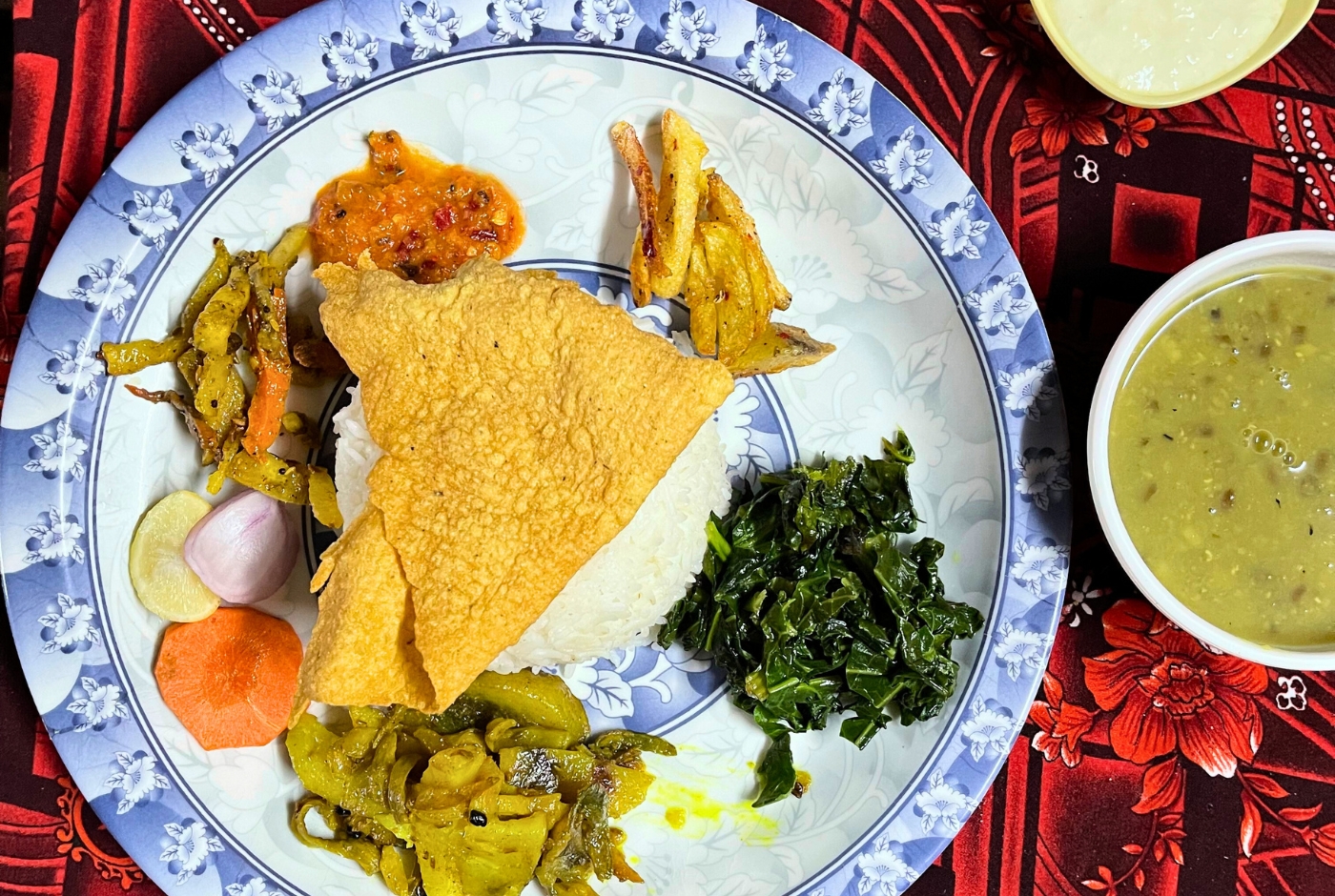
Various types of food are available on the Langtang trekking route. From the menu, visitors can choose any dishes they like. The menu contains international cuisine like pizza, spaghetti, pasta, English breakfast, salad, pancakes, and many more.
The menu also includes traditional Nepalese food, Dal Bhat, rich in nutritional value. Also, gluten-free meals vegan and veg meals are available for trekkers with special requirements.
Nonetheless, trekkers with food allergies or diet restrictions are suggested to pre-inform their assigned guide. After that your foods are made accordingly.
Currency Exchange, ATM, and Daily Budget for Langtang
You will find many currency exchange booths around Thamel, where you can easily change your money to get Nepalese rupees. You can also withdraw money from ATMs. Debit cards like Visa, Mastercard, American Express, Maestro, and Diners Club are accepted at all the ATMs. Daily withdrawals from ATMs range from 30 thousand rupees to 50 thousand rupees.
We recommend you carry enough local currency with you during the trek. You will need to pay for drinking water, hot showers, snacks, internet access, etc. It is advisable to allocate a budget of 2,500 rupees per day per person.
Tipping is expected. So at the end of your trek, you can tip your guide and porter based on your level of satisfaction with their service.
Conclusion
There is so much more to see and explore in Langtang Region. As one of the nearest trekking regions to Kathmandu, it’s easy to reach but still offers stunning views and experiences. We hope the above-mentioned reasons have inspired you enough to travel to this marvelous valley. The people you meet in this valley are inspiring. And the peaceful nature of this region is comforting. So, if you ever feel like exploring these delights, do come to Nepal. And explore the grandeur and beauty of Langtang Region.

